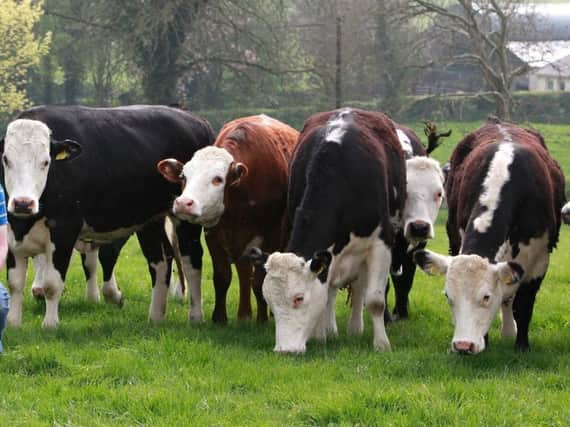Hereford '“ the brand in demand


The entry of Dunbia into this market in 2013 was a major boost for the breed. The launch of their partnership with the co-op brings the ‘Truly Irresistible’ premium Hereford beef range to stores throughout England, Wales and Northern Ireland.
Robin Irvine of the Hereford Cattle Society talks to Kenny Linton, Hereford Scheme Manager with Dunbia, about the success of the brand and how farmers can add value to their beef enterprise.
The growth of the
Advertisement
Hide AdAdvertisement
Hide AdHereford Scheme has been phenomenal – what are the contributors to this success?
The consistent eating quality that Herefords deliver is a key contributor as consumers know what to expect each time they purchase a Hereford product. The good temperament of the Hereford and its ability to fatten off grass enhances the quality of the beef and therefore the final product for customers.
How can producers play their part in the Hereford supply chain?
Producers have a key role to play in ensuring a consistent supply 52 weeks of the year for retailers and ultimately to encourage customers to buy again and again.
Advertisement
Hide AdAdvertisement
Hide AdThis requires long term planning and at Dunbia our Agri team are committed to working with our Hereford producers to ensure a sustainable supply of meat and a profitable enterprise for producers.
Is there an ideal specification for cattle entering the scheme in terms of carcass weight conformation and fat score?
Like many schemes, the Hereford scheme in partnership with the Co-op has stringent weight and grade requirements to ensure uniformity of the end product. Cattle must meet these specified weights and fat scores to enter the Hereford supply chain. We find that a carcass of around 320 kgs with a conformation of O+ or R and fat class 3 or 4L will deliver a good yield of cuts meeting the portion size and price point that customers currently demand.
A high proportion of beef cattle produced now
originate from the dairy herd – are these suitable for the scheme?
Advertisement
Hide AdAdvertisement
Hide AdYes, Herefords are frequently used in dairy herds for their renowned ease of calving. As long as the appropriate production systems are in place, the required carcase weights can be achieved, making them suitable for the scheme.
How do you see future
demand for the
product – what is the key to continued growth?
The consumer’s desire for high quality meat is showing no signs of slowing, so as long as customers demand Hereford for its guaranteed succulence and taste we will see continued growth. The key to this growth will be maintaining the high quality eating experience that customers expect while keeping Hereford beef at an affordable level for these customers.
How can the Hereford
supply chain be
developed?
The Hereford supply chain can be further developed through a greater focus on the genetics and production systems which can best deliver current market requirements. Closer working relationships between breeders, finishers and processors can ensure that each link in the chain can respond effectively to changing customer behaviour.